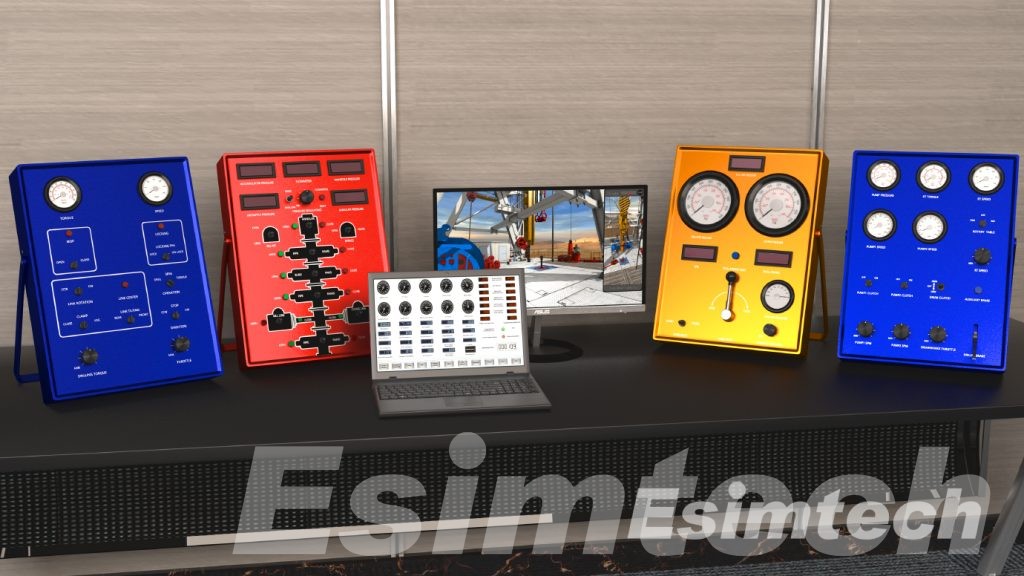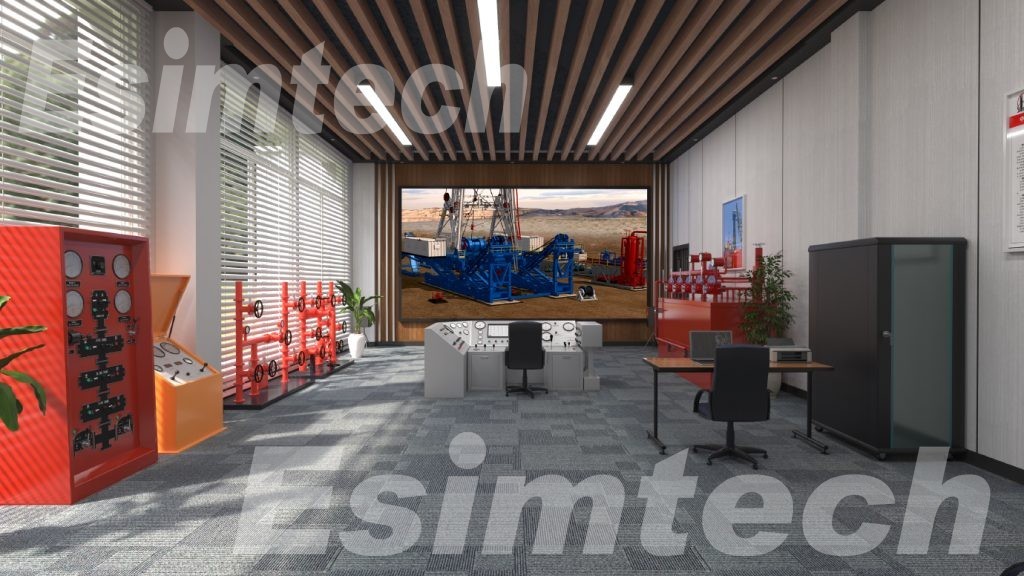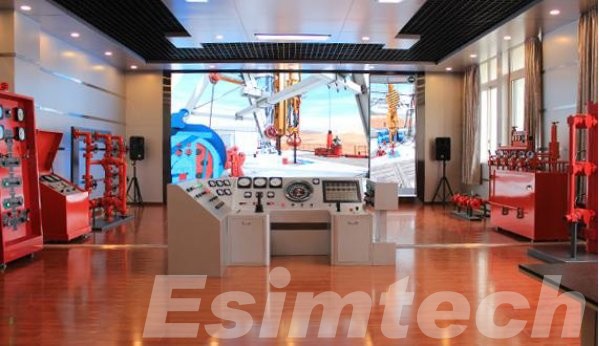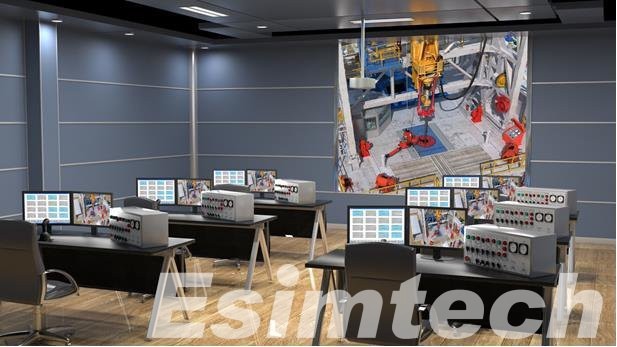Training Using Drilling Simulators vs. On-the-rig Experience
In the oil and gas industry, effective training is crucial to ensure safety, efficiency, and operational excellence. Two prominent methods for training personnel for drilling operations are drilling simulators and on-the-rig experience. While both methods have unique strengths, understanding the differences and synergies between drilling simulators vs. on-the-rig experience can help operators craft a comprehensive training strategy that maximizes workforce competency.
What are Drilling Simulators
Drilling simulators are advanced training systems designed to replicate the environment and operations of real-world oil and gas drilling rigs. These simulators use a combination of hardware, software, and realistic interfaces to mimic the behavior of drilling equipment and processes, allowing trainees to practice and learn in a safe, controlled, and repeatable environment.
Key Features
- Realistic Interfaces: Drilling simulators often include equipment mockups like joystick controls, touchscreens, driller’s consoles, choke panels, and BOP controls to closely mirror the actual rig environment.
- Scenario-Based Training: They simulate a wide range of operational scenarios—from normal drilling operations to emergency situations such as blowouts, stuck pipe incidents, kicks, and loss of circulation.
- Real-Time Feedback and Monitoring: Instructors can monitor trainee performance in real time, track decisions, and provide immediate feedback. Some systems even include automated performance scoring and replay features.
- Team Training Capability: Many simulators support multi-user sessions, allowing entire crews to train together and improve communication, coordination, and decision-making under pressure.
- Customization and Adaptability: Training modules can be tailored to specific rig types (land rigs, offshore platforms, deepwater operations), drilling programs, or company procedures.

Types
| Simulator Type | Description | Typical Applications |
| Desktop-Based Simulators | Software-based systems run on standard computers with basic controls | Basic training, theory application, individual learning |
| Portable Drilling Simulators | Compact units with touch screens and limited controls, often used on-site | Field training, mobile learning setups, pre-job briefs |
| Chair-Mounted Simulators | Simulated driller’s chair with operational joysticks and panels | Driller and assistant driller training, equipment familiarity |
| Full-Scale Rig Floor Simulators | Life-size replicas of rig consoles and equipment with 3D environments | Crew training, procedural practice, full-scale scenario immersion |
| Cyber Drilling Simulators | Advanced systems using real-time data, AI, and physics-based modeling | Complex well control, real-time decision-making, advanced diagnostics |
| Well Control Simulators | Focused on simulating kick detection, shut-in procedures, and pressure control | Well control certification and training |
| VR Simulators | Use virtual reality tech for immersive training without physical hardware | Safety training, spatial awareness, rig familiarization |
Benefits
- Risk-Free Training: Trainees can make mistakes and learn from them without endangering people, equipment, or the environment.
- Cost Efficiency: Reduces the need for training time on expensive rigs and prevents costly operational downtime.
- Preparedness for Critical Events: Allows repetition of rare but dangerous scenarios to ensure readiness in real-life emergencies.
- Standardization: Ensures all personnel receive consistent training across locations and roles.

Understanding On-the-rig Experience Training
On-the-rig experience training is the hands-on, real-time learning process that takes place directly at a working drilling rig, whether onshore or offshore. It offers trainees the chance to experience the realities of rig operations, develop practical skills, and understand the workflow, safety practices, and dynamics of a live drilling environment.
Key Aspects
- Real-World Exposure: Trainees are immersed in actual drilling operations, dealing with real equipment, live data, and changing conditions. This exposure helps build situational awareness and understand the rig’s operational rhythm.
- Skill Development in a Live Environment: Tasks like pipe handling, tripping, mud circulation, well control, and rig inspections are practiced under the guidance of experienced crew members. This builds muscle memory and practical confidence that can’t be fully simulated in a classroom or simulator.
- Team Integration and Communication: Working on a rig teaches trainees how to communicate effectively with various team members—drillers, toolpushers, roughnecks, engineers, and safety personnel—creating a deeper understanding of crew roles and teamwork.
- Learning from Real Challenges: Unlike controlled simulations, rig operations come with unexpected challenges, including weather conditions, equipment failures, or geological surprises. Handling these in real time builds adaptability and critical thinking.
- Safety Culture Immersion: Safety is central to rig operations. Trainees learn firsthand about permit-to-work systems, hazard identification, lockout/tagout procedures, and emergency drills, instilling a strong safety-first mindset.

Benefits
- Authentic Experience: Offers a depth of realism unmatched by classroom or simulated training.
- Immediate Relevance: Trainees see how their learning translates to the job, reinforcing retention.
- Professional Growth: Helps develop discipline, responsibility, and respect for the physical and mental demands of the industry.
- Exposure to Complex Equipment: Trainees work directly with industry-standard tools, machinery, and instrumentation.
Limitations
- Risk of Accidents: Mistakes on a rig can have serious consequences, so trainees must be closely supervised.
- Cost and Logistics: Includes expenses for travel, PPE, insurance, and possibly halting operations for training.
- Variable Learning Opportunities: Exposure to certain scenarios depends on what’s happening on the rig at the time.
- Limited Repetition: Unlike simulators, it’s harder to “replay” situations or practice rare events repeatedly.

Key Differences Between Training Using Drilling Simulators vs. On-the-rig Experience
| Aspect | Drilling Simulators | On-the-Rig Experience |
| Realism | Simulated, controlled environment with high fidelity | Actual working conditions and real equipment |
| Safety | Completely risk-free; safe for practicing emergencies | High-risk; requires strict supervision and adherence to protocols |
| Learning Environment | Structured, repeatable scenarios | Unpredictable, based on current rig operations |
| Cost and Logistics | Cost-effective; no rig downtime or travel needed | Expensive; involves travel, PPE, insurance, and rig scheduling |
| Scenario Repetition | Easy to repeat critical events (e.g., kicks, blowouts) | Limited; depends on what happens during actual rig operations |
| Feedback and Evaluation | Real-time performance tracking and automated assessment | Informal, based on supervisor observations |
| Emergency Response Training | Practice rare, dangerous situations safely and repeatedly | Limited opportunity unless real events occur |
| Team Coordination | Simulated teamwork under controlled stress | Real-world communication and teamwork |
| Knowledge Retention | High retention through repeated, hands-on digital practice | Strong retention from real-world consequences and task immersion |

Choosing Between Training Using Drilling Simulators vs. On-the-rig Experience
- Realism vs. Safety
Drilling simulators offer a highly controlled environment where trainees can learn to manage complex drilling operations without risking equipment or personnel. Simulators replicate real-world scenarios—such as kick detection, stuck pipe situations, or blowout preventer (BOP) failures—with high fidelity, allowing trainees to develop critical thinking and decision-making skills.
In contrast, on-the-rig training immerses trainees in live operations where the stakes are real. While this experience provides unmatched realism, it also carries inherent risks. Mistakes made on-site can lead to costly downtime, equipment damage, or safety incidents.
- Cost and Accessibility
Drilling simulation training system is generally more cost-effective and accessible. Once the infrastructure is in place, trainees can repeatedly practice different scenarios without interrupting actual drilling operations. This repeatability allows for targeted training and skill development in a time-efficient manner.
On-the-rig experience, though invaluable, can be costly and logistically complex. Travel, accommodations, safety gear, and supervision add to the expenses. Additionally, the unpredictable nature of drilling operations may limit a trainee’s exposure to specific scenarios.

- Learning Curve and Progress Tracking
Simulators allow instructors to monitor, evaluate, and adjust training in real time. Performance data—such as reaction time, procedural compliance, and problem resolution—can be logged and analyzed to identify areas for improvement. This structured approach accelerates learning and ensures consistent standards across the workforce.
On the rig, learning tends to be opportunistic, depending on the current phase of the operation. While this can foster adaptability and situational awareness, it may lack the structured feedback loop that simulators provide.
- Exposure to Rare Events
Drilling simulators excel at preparing personnel for low-frequency, high-impact scenarios. Events like well control incidents or emergency shutdowns are rare but critical. Simulators enable trainees to practice these situations repeatedly until responses become second nature.
On-the-rig training, however, might not provide exposure to such events unless they occur naturally—making it harder to build experience in handling emergencies.
- Team Coordination and Communication
Advanced drilling simulators support team-based training, enabling drillers, toolpushers, and engineers to practice coordination and communication under pressure. These exercises mirror real drilling crew dynamics and help strengthen teamwork and leadership skills.
On-the-rig experience, while offering authentic team interaction, may not always allow deliberate focus on soft skills training due to the operational pace and constraints.

Summary
Both drilling simulators and on-the-rig training are indispensable tools for developing competent, confident, and safety-conscious drilling professionals.
- Simulators are ideal for building a foundation in procedures, critical thinking, and emergency response without the risks.
- On-the-rig experience embeds that knowledge in real-world context, fostering adaptability, discipline, and operational fluency, which is vital for understanding actual operational workflows and culture.
The most effective training programs in the oil and gas industry combine these two approaches, starting with simulators to build readiness and moving to the rig for practical application. This hybrid model not only ensures technical proficiency but also prepares individuals to thrive in the demanding world of drilling operations.

